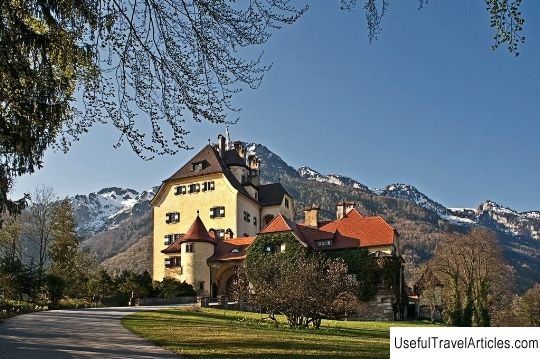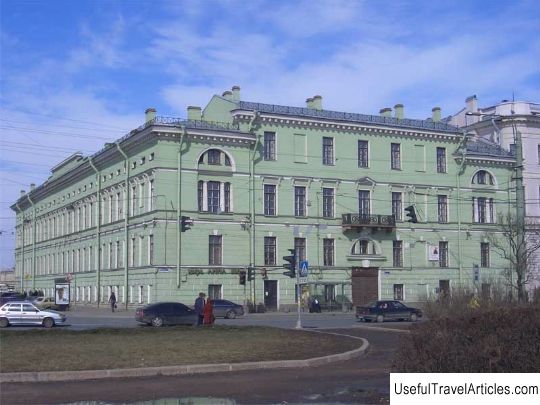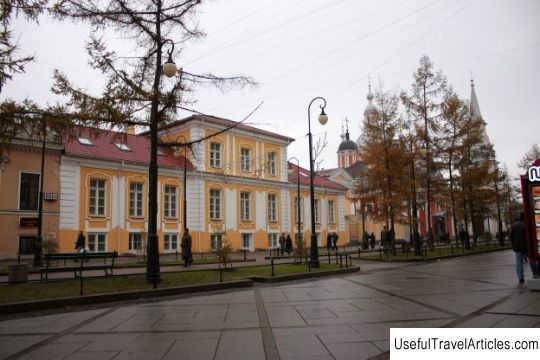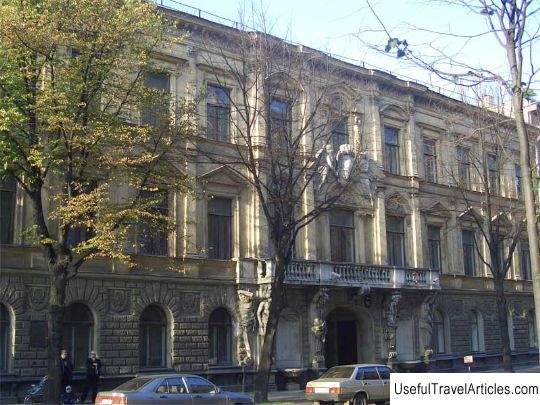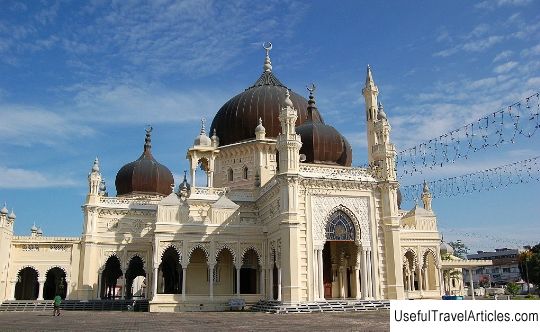House Stenbock-Fermorov description and photo - Russia - St. Petersburg: St. Petersburg
Rating: 9,4/10 (3545 votes) 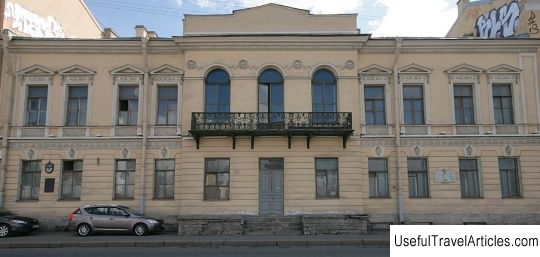
Stenbock-Fermorov house description and photos - Russia - Saint Petersburg: Saint Petersburg. Detailed information about the attraction. Description, photos and a map showing the nearest significant objects. Photo and descriptionThe Stenbock-Fermors House is located in St. Petersburg at 50 Angliyskaya Embankment. It is an architectural monument of federal significance. The house has changed a large number of owners. It all began in 1717, when the official K. Yestikheev was the owner of this land on the English Embankment. Two years later, a new owner appeared here - an official L.O. Sytin, who built chambers here (most likely, hut). By the 1730s, the site passed into the possession of A.Ya. Sheremeteva. She was married to A.P. Sheremetev, they had no children. Under Anna Yakovlevna, a typical stone dwelling house with a mezzanine and a high porch was erected here in 1736-1738. After the death of A.Ya. Sheremeteva in 1746, her nephew, Prince A.A. Dolgoruky, who in 1785 sold it to the English merchant J. Meibom. 5 years later, Meibom sold the property to chamberlain M.A. Golitsyn, who at that time returned from an educational trip to Europe. He was married to P.A. Shuvalova. In 1816, after the death of Mikhail Andreevich, the widow and heirs, the house was sold to the Moscow merchant M.K. Weber, owner of a chintz factory in Shlisselburg. By 1820, the mansion was owned by Adjutant General V.V. Levashov, famous for his very cruel character. In 1831 he was offered the post of governor in one of the provincial towns, and he sold the house to E.P. Zinovieva, the widow of the Privy Councilor. From 1835 to 1837, a wealthy mining breeder V.A. Vsevolozhsky, who died in this house. By the end of 1837, the mansion was bought by the Stenbock-Fermor family. The house on the banks of the Neva was purchased by A.N. Stenbock-Fermor. It was for him that the mansion that existed here was rebuilt, and at that time the facade from the side of the embankment acquired a modern look (the name of the architect is unknown). After the death of Alexander Nikolaevich, the house went to his widow Nadezhda Alekseevna, and then to their son Aleksey Aleksandrovich (equestrian, lieutenant general). Musical evenings and balls were held here. The closest relatives of the owners of the house came to the mansion - princes Baryatinsky, Gagarins, Tolstoy. In 1859-1862, the Prussian envoy, the future chancellor of the German Empire Otto von Bismarck, lived and worked in the Stenbock-Fermorov house. At first he settled in the "Demutov tavern" on the Moika. But it offered "the obligatory morning samovar, tea in a glass, and dubious butter," for which Bismarck was forced to look for a new home. Then he settled on the English Embankment. Here Bismarck began to equip his life. His wife from Frankfurt transported him French carved furniture, which was fashionable at the time. In St. Petersburg, Bismarck stayed only a few months a year, the rest of the time he worked in Prussia. But in his letters to friends from Russia, he wrote that he really misses home on the embankment. In mid-spring 1862, Bismarck was recalled from Russia and sent as ambassador to Paris. Currently, on the house you can see a memorial marble plaque to O. Bismarck (architect E.E. Lazareva, sculptor L.K. Lazarev, 1998). In 1862, the mansion passed to the young daughter of Alexei Alexandrovich Nadezhda Stenbock-Fermor. In 1882 she married the diplomat P.A. Kapnista. When they were in Petersburg, they lived in a mansion on the side of Galernaya Street. Aleksey Aleksandrovich Stenbock-Fermor continued to live in the house on the embankment. Even under his mother, the architect V.P. Zeidler carried out restructuring on the site. A 3-storey wing appeared in the courtyard, and the facade of the house was renewed from the side of Galernaya Street. In 1870-1876, the mansion housed the Austro-Hungarian embassy, for which the interiors were redone. In 1902, according to Zeidler's project, a third floor appeared on the building on Galernaya Street. In 1905 the architect V.A. Teremovsky rebuilt the courtyard wings, changed the interiors of the mansion. From the 70s of the XIX century to the present, some interior details have been preserved in the house. Partitions in the rooms do not reach the ceiling and reveal the preserved decoration of the ceilings and cornices. Parquet from valuable wood species has survived to this day. In one of the premises of the left building you can see medallions and painted padugs.       We also recommend reading American Museum of Natural History description and photos - USA: New York Topic: House Stenbock-Fermorov description and photo - Russia - St. Petersburg: St. Petersburg. |
